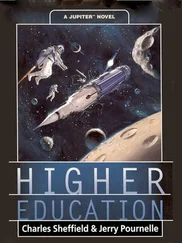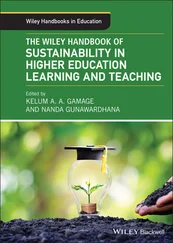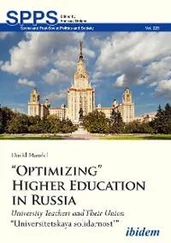Developments in Higher Education Law Since the Publication of the Fifth Edition
In the six years since publication of the fifth edition and then its updates, many new and newly complex legal concerns have arisen on America's campuses—from the ever-greater and more complex implications of the explosion in social media on faculty and student conduct and rights, to the continuing challenges to affirmative action in admissions and financial aid, to the membership practices of student religious organizations in the context of institutions' nondiscrimination policies, to the clash between faculty and “institutional” academic freedom, to the rights of intercollegiate athletes. Indeed, it is difficult to identify any other entities—including large corporations and government agencies—that are subject to as great an array of legal requirements as colleges and universities are. To serve the needs occasioned by this continual growth of the law, this Student Version of LHE 6th retains the material of continuing legal currency from the 5th Edition of LHE , that is within the parameters we have set out above. We reorganized and re-edited this material to accommodate the deletion of old and the addition of new developments and to maximize clarity and accessibility. To this base, we added considerable new material: more than one-third of the material in the 12 chapters of the Student Version did not appear in earlier editions of The Law of Higher Education . This new material integrates pertinent new developments and insights regarding topics in the earlier editions and introduces numerous new topics and issues not covered in earlier editions.
Like the full 6th Edition, this Student Version covers all of nonprofit postsecondary education—from the large state university to the small private liberal arts college, from the graduate and professional school to the community college and vocational and technical institution, and from the traditional campus-based program to the innovative off-campus or multistate program, and to distance learning as well. The Student Version also reflects the same perspective as the full 6th Edition and earlier editions on the intersection of law and education. As described in the preface to the 1st Edition :
The law has arrived on the campus. Sometimes it has been a beacon, at other times a blanket of ground fog. But even in its murkiness, the law has not come “on little cat feet,” like Carl Sandburg's “Fog”; nor has it sat silently on its haunches; nor will it soon move on. It has come noisily and sometimes has stumbled. And even in its imperfections, the law has spoken forcefully and meaningfully to the higher education community and will continue to do so.
Organization and Content of the Student Version
We have organized this Student Version into 12 chapters. These chapters are in turn organized into five parts: (1) Perspectives and Foundations; (2) The College and Its Governing Board and Staff; (3) The College and Its Faculty; (4) The College and Its Students; and (5) The College and the Outside World. In turn, we have divided these five parts into 12 chapters. Each chapter is divided into numerous sections and subsections with their own titles.
Chapter 1provides a framework for understanding and integrating what is presented in subsequent chapters and a perspective for assimilating future legal developments. Chapter 2addresses foundational concepts concerning legal liability, preventive law, and the processes of litigation and alternative dispute resolution. Chapters 3through 10develop the legal concepts and issues that define the internal relationships among the various members of the campus community and address the law's impact on particular roles, functions, and responsibilities of students, faculty members, and trustees and administrators. Chapter 11is concerned with the postsecondary institution's external relationships with government at the federal, state, and local levels. This chapter examines broad questions of governmental power and process that cut across all the internal relationships and administrative functions considered in Chapters 3through 10. Chapter 12also deals with the institution's external relationships, but the relationships are those with the private sector rather than with government. This chapter explores the various national and regional education associations with which postsecondary institutions interact, as well as the various research ventures that institutions engage in with private entities from the commercial world.
Prior to the first chapter, we have included a General Introduction with six sections. After the last chapter, we have included a bibliography of resources for research and independent study, as well as four appendices containing various study aids.
The Student Version uses the terms “higher education” and “postsecondary education” to refer to education that follows a high school (or K–12) education. Usually, these terms are used interchangeably; but occasionally “postsecondary education” is used as the broader of the two terms, encompassing formal post–high school education programs whether or not they build on academic subjects studied in high school or are considered to be “advanced” studies of academic subjects. Similarly, this book uses the terms “higher education institution,” “postsecondary institution,” “college,” and “university” to refer to the institutions and programs that provide post–high school (or post–K–12) education. These terms are also usually used interchangeably; but occasionally “postsecondary institution” is used in the broader sense suggested above, and occasionally “college” is used to connote an academic unit within a university or an independent institution that emphasizes two-year or four-year undergraduate programs. The context generally makes clear when we intend a more specific meaning and are not using the above terms interchangeably.
The term “public institution” generally means an educational institution operated under the auspices of a state, county, or occasionally a city, government. The term “private institution” means a nongovernmental, nonprofit, or proprietary educational institution. The term “religious institution” encompasses a private educational institution that is operated by a church or other sectarian organization (a “sectarian institution”), or is otherwise formally affiliated with a church or sectarian organization (a “religiously affiliated institution”), as well as an institution that has no affiliation with an outside religious organization but nevertheless proclaims a religious mission and is guided by religious values.
Recommendations for Using the Student Version and Keeping Up-to-Date
There are some precautions to keep in mind when using this book. The legal analyses throughout the book, and the practical suggestions, are not adapted to the law of any particular state or to the circumstances prevailing at any particular postsecondary institution. The book is not a substitute for the advice of legal counsel, nor a substitute for further research into the particular legal authorities and factual circumstances that pertain to any legal problem that an institution, administrator, student, or faculty member may face in real life. Nor is the book necessarily the latest word on the law. There is a saying among lawyers that “the law must be stable and yet it cannot stand still” (Roscoe Pound, Interpretations of Legal History, p. 1 (1923)), and the law moves especially fast in its applications to postsecondary education. Thus, we suggest that instructors and students keep abreast of ongoing developments concerning the topics and issues in this book. Various aids (described below) are available for this purpose.
Читать дальше












